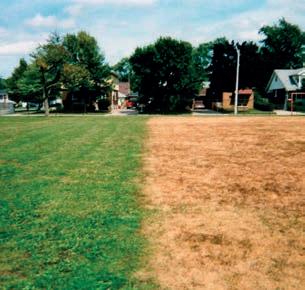2 billion trees
IN 10 YEARS The Canadian government announced an ambitious tree planting campaign. Can they pull it off?
Seamus O’Regan
Landscape Trades recently had the opportunity to converse with the Minister of Natural Resources, Seamus O’Regan, about the Government of Canada’s recent pledge to plant two billion trees over the next 10 years. Landscape Trades: As a Newfoundlander who hails from a province known globally for its abundant natural resources and stunning natural beauty, what is your relationship with nature and trees? Seamus O’Regan: I grew up in Newfoundland with the sound of waves crashing on the rocks. My family later moved to Labrador, where I could see the Northern Lights from our backyard. Protecting and preserving nature is deeply personal for me. And, the power of nature is incredible. It’s at the heart of our fight against climate change. So, we’ve promised to plant two billion trees over 10 years — and we’re going to get it done. The first trees will be in the ground this spring (2021). In December 2020, you announced a plan to plant two billion trees at a cost of $3.16 billion over 10 years. How will that benefit Canada, individual Canadians and our biosphere? The Growing Canada’s Forests (GCF) program will see two billion trees planted over 10 years. Its purpose is to harness nature’s ability to combat climate change and contribute to Canada’s efforts to get to net-zero emissions by 2050. Trees remove carbon from the atmosphere as they grow. By supporting the planting of two billion trees, GCF has the potential to remove up to 12 megatonnes of carbon dioxide equivalent per year by 2050. Planting trees is a natural climate solution. A natural climate solution is one that enables increased carbon sequestration and storage by natural 16 | MAY 2021 | LANDSCAPE TRADES
and managed ecosystems, such as forests, grasslands, wetlands, agricultural lands and coastal areas. These activities can also increase community resilience to the impacts of climate change, such as flooding, thereby reducing the need for greenhouse gas-intensive and costly infrastructure. Moreover, planting trees that are expected to do well in a changing climate can improve the long-term resilience of our forests. Beyond greenhouse gas mitigation and climate adaptation, natural climate solutions can contribute to other federal objectives, such as Canada’s commitments under the Convention on Biological Diversity and the Migratory Birds Convention, advancing the government’s commitment to conserve 25 per cent of Canada’s lands by 2025 and 30 per cent by 2030, supporting species-at-risk objectives, improving the sustainability of the forest and agriculture sectors, supporting healthy communities — including through increased green space, improved air and water quality, creating jobs for Canadians and advancing inclusive growth and reconciliation with Indigenous Peoples. According to extrapolations of a September 2015 research report sponsored by Nature Journal, it is estimated that Canada now has about 339 billion trees, covering almost 39 per cent of its land mass. With the forest industry, private interests and all levels of government already planting between 500 and 650 million trees per year, how will the new tree-planting initiative be of additional benefit to Canada? Canada is fortunate to have vast forest ecosystems that support the well-being of Canadians, including through the provision of wood and other renewable bioproducts. Nature is part of the solution to climate change: there is no path to net-zero emissions that does not involve our forests. Approximately 94 per cent of Canada’s forests









